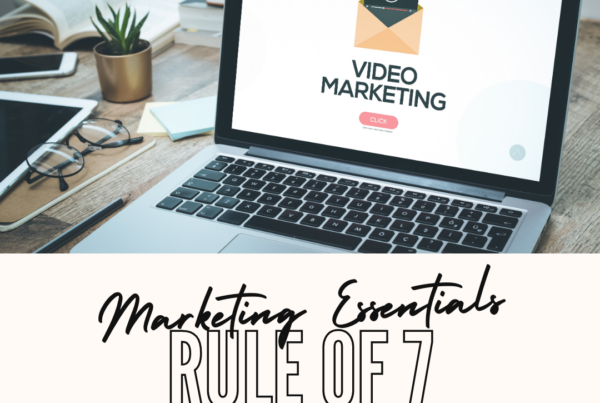
Another revealing statistic suggests that 76% of companies decided to make huge cuts to their advertising budgets in 2020. To utilize various marketing tips to get you back on track, you’ll need to start by surveying the landscape of your industry.
A COVID Marketing Strategy
Aside from the reasons outlined above, you may still be asking yourself, why do I need to adjust my marketing strategy after COVID?
While it’s more complex than this, the simplest answer is that for a variety of reasons, many consumers aren’t making purchases. Due to perilous unemployment rates, no health coverage, and a lack of financial security, extra purchases simply have not been an option for many people.
Furthermore, some products have frankly become irrelevant. People aren’t wearing office clothes, commuting, or going out to restaurants. This rendered the numerous products and services extraneous.
Fortunately, there is a way to bounce back. Whether your business is positioned to profit from the pandemic, has almost gone under, or is merely trying to keep a proverbial head above water—COVID has had a significant impact on EVERY industry.
Discussing business, making profits, and marketing during COVID can be a delicate subject for some business owners. Accordingly, with your marketing strategy, it’s now more important than ever to be relevant, empathetic. People are growing tired of the In these uncertain times emails in their inbox. As a business owner, or marketer, what can you do?
Start thinking about how you’re going to make an empathetic, profitable marketing strategy in 2021. Regardless of where you stand on the COVID-19 vaccine’s, business owners and marketers have had almost a full year to think about how to move forward, rethink their business model, and become successful in 2021 and beyond.
Now it’s time to plan.
1. Don’t Make Assumptions
How many times have you heard this:
Since everyone’s been working from home these days…
or
We’re all tired of staring at the same four walls…
Are these statements true for many? Yes.
But are they true for everyone? No.
Many essential workers, from retail employees to healthcare workers, have put their lives on the line for months. Making assumptions that everyone’s had the luxury to work from home can eliminate a broad consumer sector.
2. Demonstrate Empathy
What are your customers dealing with emotionally? Striking a balance between empathy and maintaining the goal to sell your product or services can be difficult. If you’re a company that sells unnecessary products such as swimsuits or high fashion, you can easily come across as insensitive to someone who recently lost their job or a person at home sick with COVID-19.
None of us has ever been a part of a pandemic, so customers are worried. Their worlds, schools, places of employment, finances, relationships, and more may all be in disarray.
Then, how as business owners and marketers are we supposed to position ourselves for success once the pandemic is over? Demonstrate empathy.
That old adage, walk a mile in their shoes, holds true here.
3. Marketing After COVID
With the above swimsuit example, few people really need a new swimsuit. After all, consumers can swim in last year’s swimsuit or even dig one one up from a few years ago. Ultimately, there is no real need for that new red one-piece or high fashion board shorts.
Analyze your current marketing strategy.
Are swimsuits necessary? No.
Will a new swimsuit provide a glimmer of joy in an otherwise colorless span of time?
Or, will that swimsuit make the consumer more excited about undertaking a socially distanced swim at a river or in the ocean?
Consider how your marketing strategy speaks to your target audience that has gone through a pandemic for a year and is looking for hope in 2021.
4. Tell Authentic Stories
In reflecting on 2020, it has become clear that most of us are struggling in some capacity—nobody has it all together.
In a video conference, your supervisor’s pet may zip across the keyboard, or, a screaming child might enter the room. Then there is the perfectly composed coworker who can’t quite get Zoom to work correctly.
2020 was a year of honesty, and the same should hold true for marketing during and post COVID-19.
What are the stories of your employees during COVID? How is your company helping to make the world a better, safer place? What’s a genuinely heartwarming customer story that can be shared?
While it’s important to be cautious by not rendering your content cheesy, everyone needs a heartwarming moment these days.
Perhaps the most important marketing tip after COVID-19 is to be authentic.
5. Promote Agility
A staggering statistic shows that 86% of Americans believe that COVID-19 will have a lasting impact on society. It’s safe to assume that no industry or our previously recognized way of life will go back to exactly how they were before the pandemic.
Accordingly, your company needs to be flexible. You’ll need to figure out what consumers want in order to feel safe, understood, and provided for in an uncertain world.
To achieve such goals, you can start leveraging the resources you already have. Look at the data within your CRM—analyze your customer relationships. Listen to customers and clients describe their current challenges, fears, and wishes.
Are your customers or clients worried about leaving the house? Are they scared that their bank account will be empty in the near future?
LISTEN TO YOUR CUSTOMERS! You may discover a clear change that needs to be made with your organizational strategy or processes. For example, if you have people that come to your business, it may be a simple matter of enforcing mask rules (above the nose) for all employees, or implementing contact-free payment methods.
Other solutions may be more difficult to uncover, but adapting your organizational strategy in ways that were not considered in your most recent five-year plan can help your company blossom in a post-COVID world.
Fundamentally, marketing tips after COVID should prioritize flexibility and strength.
6. Make It A Team Effort
With the new video conference business model, you may feel disconnected from your team. By now, many of us have become wary of Zoom meetings. On the other hand it’s not yet safe to gather everyone in the same office unless it’s absolutely necessary.
Consider implementing a project management tool, Slack, or internal social network tool to allow folks to work productively in an asynchronous fashion. Have fun Zoom happy hours on Friday nights. Going into 2021, increasing employee engagement and morale will be a vital component to organizational success.
Now is the time to highlight your team. How are their individual efforts helping others? How do the people you choose to employ make your company a rockstar brand during COVID?
Truthful, and transparent marketing strategies are what people are looking for these days. Let people see the faces behind your brand!
7. Unusual Marketing Tips? Service & Giving Back
Generosity, charity, service, paying it forward … it’s the right thing to do. Giving back to the people that make your business a success will help you now as well as in the future. Customers and clients will remember the discount or 3 free months of service you offered, while they were dealing with financial issues.
Is this a marketing technique? Absolutely! But it’s perhaps the most genuine. Giving without the expectation of immediate sales, or a revenue spike, is how it should be done.
Serving your community, whether that’s volunteer hours, donating your product to healthcare workers, or opening up subscription apps for free to people stuck at home, there are always ways you can help.
People remember where you and your company were during times of crisis.
Marketing After COVID? Stay Resilient
Although Resilience has become a new buzzword, it’s also part of any showcase of great marketing tips.
If your company can survive a pandemic, it can likely survive anything. By coming together with your community, giving back, and listening to what consumers have to say, you’ll maintain brand loyalty.
And when people have money, they’ll remember what you did and start purchasing again. Contact us today to get some help with your marketing strategy!



